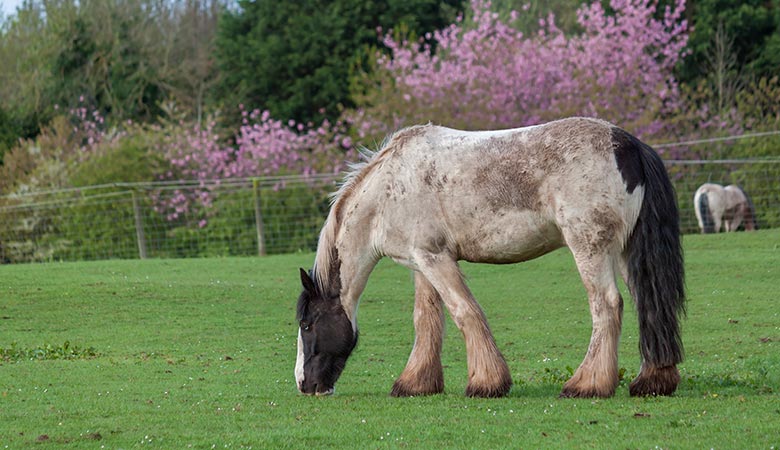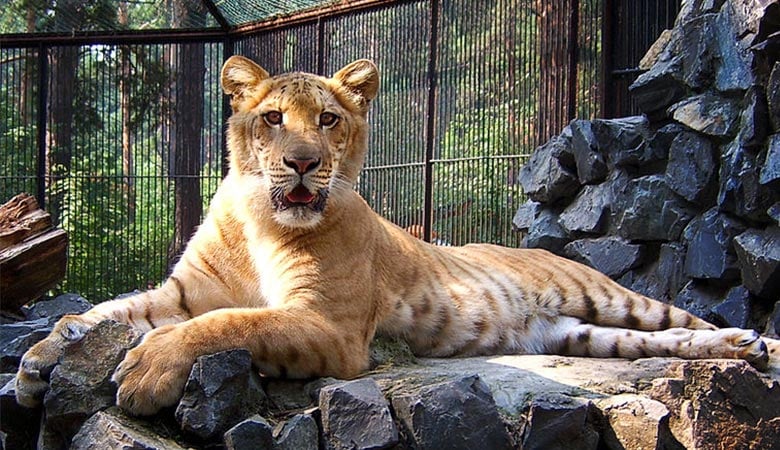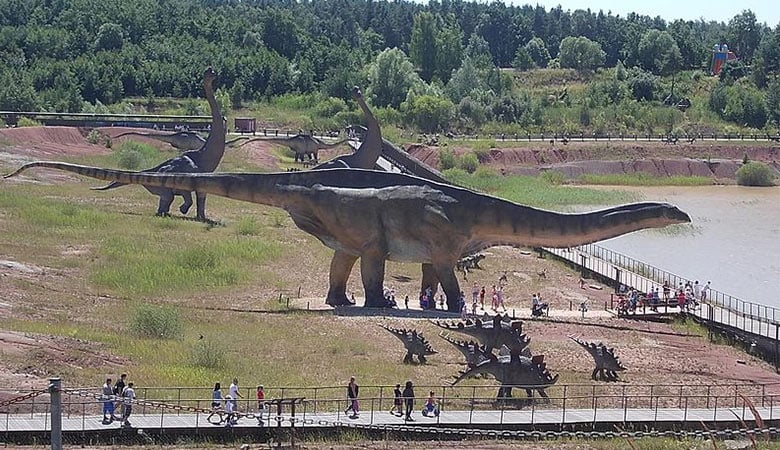Insects are the most varied animal category, with over a million species described and accounting for more than half of all known living organisms.
The overall number of living species is estimated to be between six and ten million, with insects accounting for perhaps over 90% of all animal life forms on the planet.
Insects can be found in practically every environment, albeit just a few species live in the oceans, which are dominated by another arthropod group, crustaceans, within which insects are nested, according to recent studies.
A chitinous exoskeleton, a three-part body (head, thorax, and abdomen), three pairs of jointed legs, compound eyes, and one set of antennae are all features of insects.
This piece seeks to bring to your knowledge, the heaviest insects on earth from the several millions of species existing and intriguing facts you need to know about these insects. asides their weight.
1. The Giant Weta
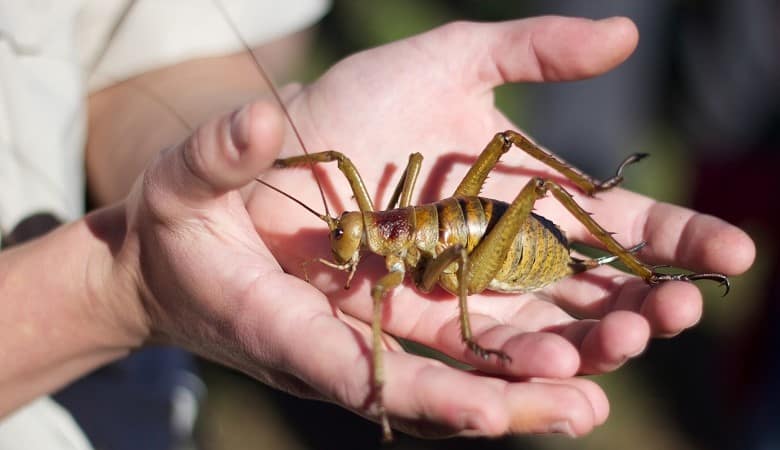
The Giant weta is one of the world’s largest insects, dwarfing most other insects and even small rodents at a weight of 71 g (2.5 oz).
Weta is derived from the Maori term wetapunga, which means “god of hideous things.” Deinacrida is the genus name, which means “awful grasshopper.”
In New Zealand, there are around 70 different species of weta —The carnivorous tusked weta, the tree weta, and the cave weta are all near relatives of the gigantic weta. Alpine weta can freeze solid in the winter before thawing and moving on in the spring.
Though the Giant Weta looks like a big cricket, they cannot fly because of their heavyweight.
The weta, like other insects, lacks lungs and breathes through its exoskeleton. The weta’s external shell has holes that link to tubes that pump oxygen to all of the insect’s cells.
2. Giant Stick Bug
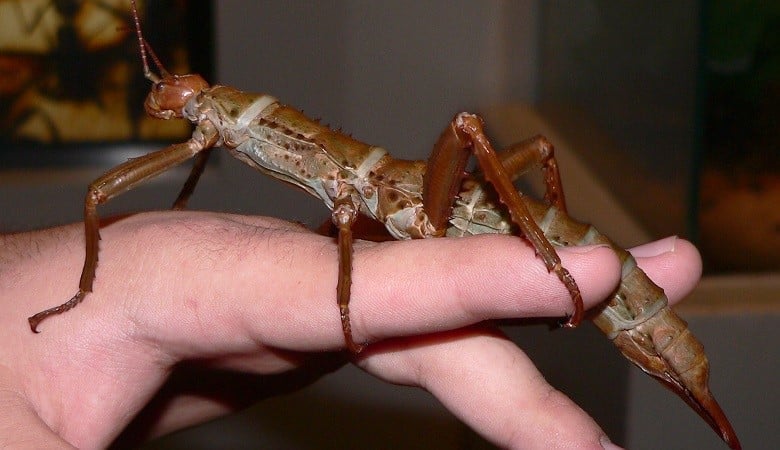
Stick insects are the world’s longest insects, having evolved a peculiar morphology to conceal from predators among branches, twigs, and foliage.
The longest variation is the giant walking stick from Southeast Asia, which can grow up to 2 feet in length as they weigh 2.3 oz (65 g).
To thwart predators, many stick insects imitate death, and some will even shed a limb to escape an enemy’s grasp. Others use their spine-covered legs to slash at predators, while Anisomorpha buprestoides, a North American species, release a foul-smelling fluid. Generally, these insects are mostly harmless and are frequently kept as pets.
3. Goliath Beetles
Goliath beetles are any of the five species of the genus Goliathus. They are named after the biblical giant Goliath. Goliath beetles are among the world’s largest insects in terms of size, volume, and weight, weighing around 50 to 60 grams.
Goliath beetles feed largely on tree sap and fruit and can be found in many of Africa’s tropical woods. In the wild, nothing is known about the larval cycle, however, Goliathus beetles have been successfully grown from egg to adult in captivity using protein-rich meals like a commercial cat and dog food.
Because of their power, Goliath beetles are also known as the world’s largest insects. They can lift a load that is 850 times larger than their weight.
4. Tarantula Hawk
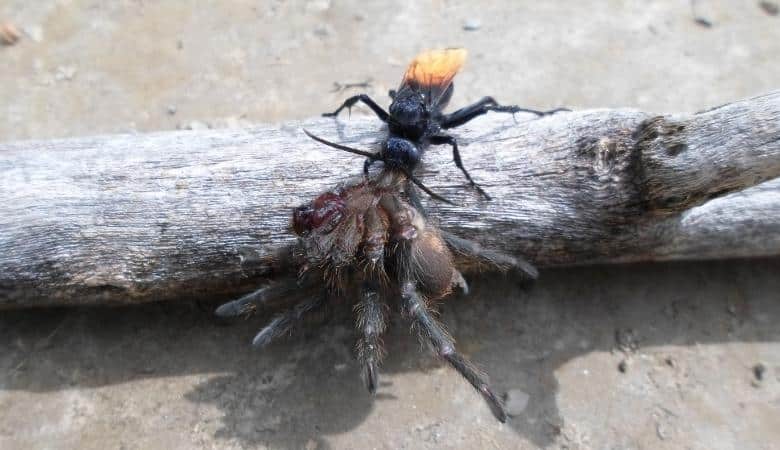
These massive wasps are capable of hunting and preying on tarantulas due to their size and ferocity.
Their legs feature hooks on the ends that they use to latch on to their prey, and their stinger (which can be as long as a third of an inch) is considered one of the most painful in the world. Fortunately, they are typically peaceful unless provoked, but this is one nasty beetle you don’t want to come across.
5. Elephant Beetles
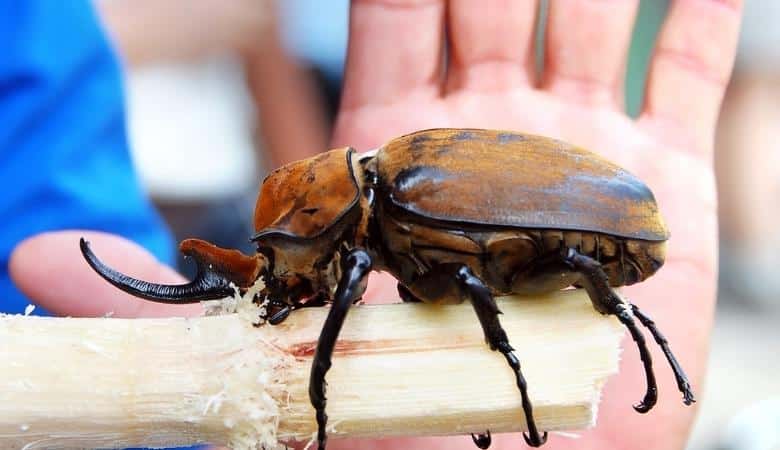
The Elephant Beetle (Megasoma elephas) is a huge, striking beetle that originated in the lowland rainforests of Central and South America and belongs to the scarab family. Beetles have a length of 70-120mm (or over). Males are typically two to three times larger than females, with weights ranging from 50 to 70 grams.
Male Elephant Beetles have huge, beautiful horns that protrude from their heads, resembling an elephant’s trunk (this is the primary reason for their name) The function of the males’ horns is to compete with other males for food and breeding grounds.
The larvae of the beetle develop in big decaying logs and might take up to four years to mature into adults. Adult beetles have a four-month life span.
6. Atlas Moths
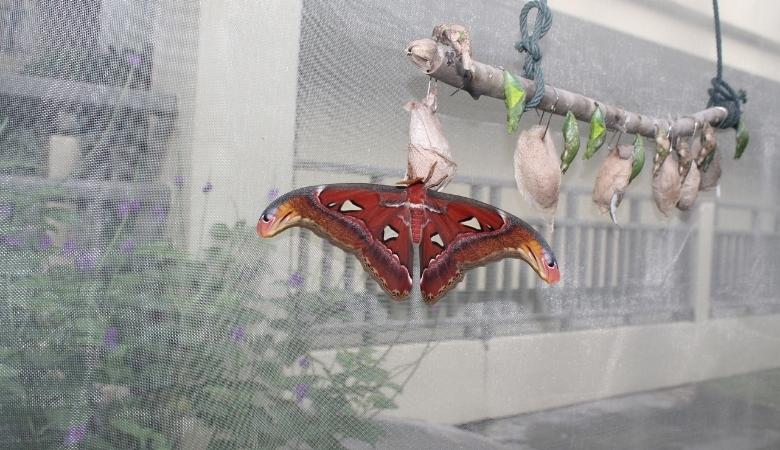
The atlas moth is among the biggest insects on the planet, with a wingspan stretching up to 27 centimeters across – that’s wider than a human handspan, and it weighs around 25 to 28g. In comparison to the wings, the body is abnormally small. The upper side of the wings is reddish-brown with a black, white, pink, and purple line pattern and triangular, scale-less windows rimmed in black.
The undersides of the wings are paler than the topsides. When the moth is challenged by possible predators, both forewings have a noticeable extension at the tip with patterns that mimic the head of a snake, a similarity that is emphasized by movements of the wings.
Every flight consumes important energy and can cut days from their already limited lifespan, which ranges from one to two weeks. They try to fly as little as possible to save energy. A female will wait for a male to appear, fertilize her, lay eggs, and then die.
7. Giant Water bugs
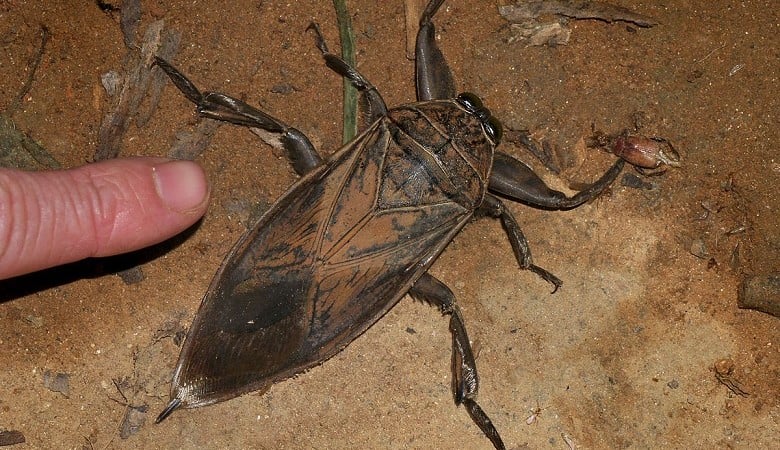
These massive insects, sometimes known as toe-biters and alligator ticks, can grow to be as long as some of the world’s largest beetles. The largest species of giant water bug can exceed 12 cm (4.5 in).
Giant water bugs, known as fierce predators in the streams and ponds where they reside, may administer a devastating bite (thus the nickname “toe-biters”). They are, however, considered good for eating in Thailand, and are frequently lured, harvested, and collected using black lights, which attract the insects.
8. Titan Beetles
Many enormous beetles live in the Amazon rainforest, but none are as long as the titan beetle, Titanus giganteus. This enormous insect possesses mandibles that can easily snap a pencil in half and are said to be capable of ripping into human flesh. It can grow up to 6.5 inches in length.
This insect is a popular attraction for daring travelers and many ecotourism organizations in South America feature photos of it in their brochures. When threatened, the titan beetle, like many other beetles, can make a loud hissing sound.
The larvae have never been discovered, although they are believed to feed inside wood and may take several years to mature before pupating. Below the surface, these insects are considered to feed on decomposing wood.
9. Actaeon Beetle
The Actaeon Beetle has one of the largest larval stages as if it wasn’t enormous enough as an adult. The huge larvae can weigh up to 200 grams, yet they prefer to hide beneath the soil where they hatched from their eggs so that they can mature invisibly. The larval and pupal stages of the Actaeon Beetle have a combined developmental time of about three years.
Actaeon Beetles, like most horned beetles, employ their fearsome horns in combat with one another. Their fighting style is said to be similar to that of deer, as they collide in an attempt to unbalance their opponent with their horns.



